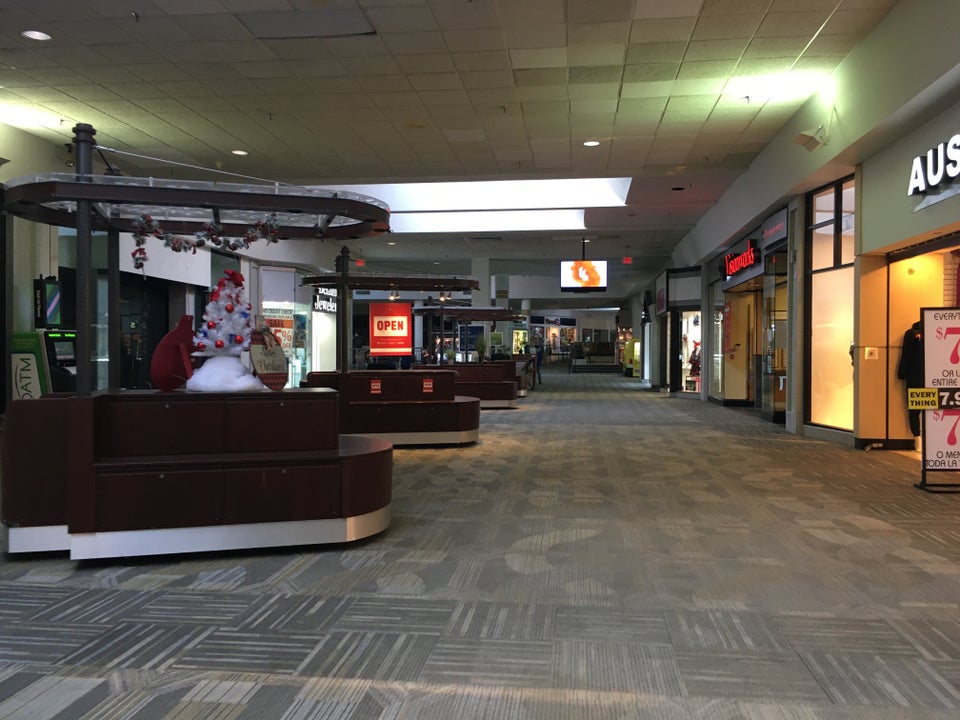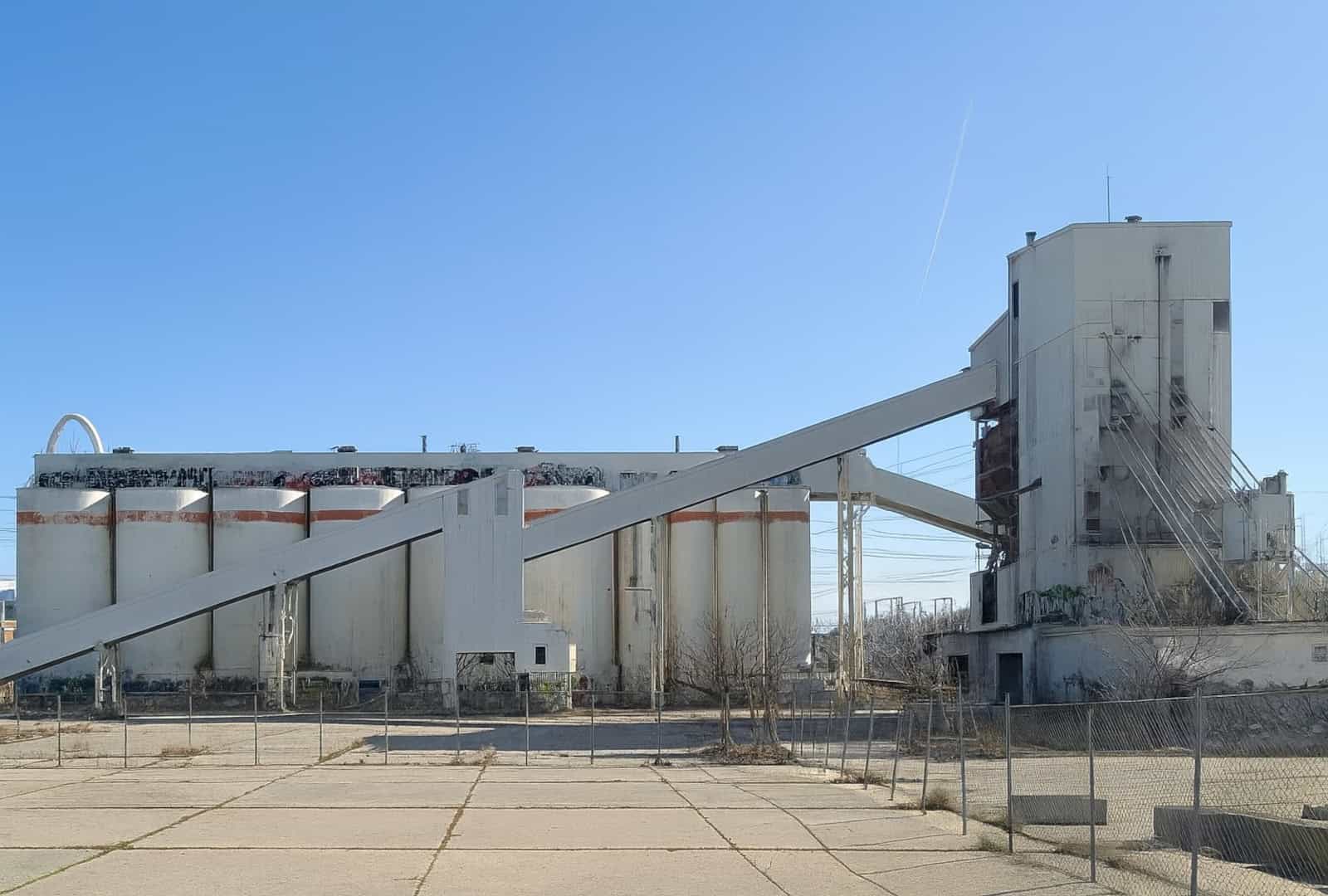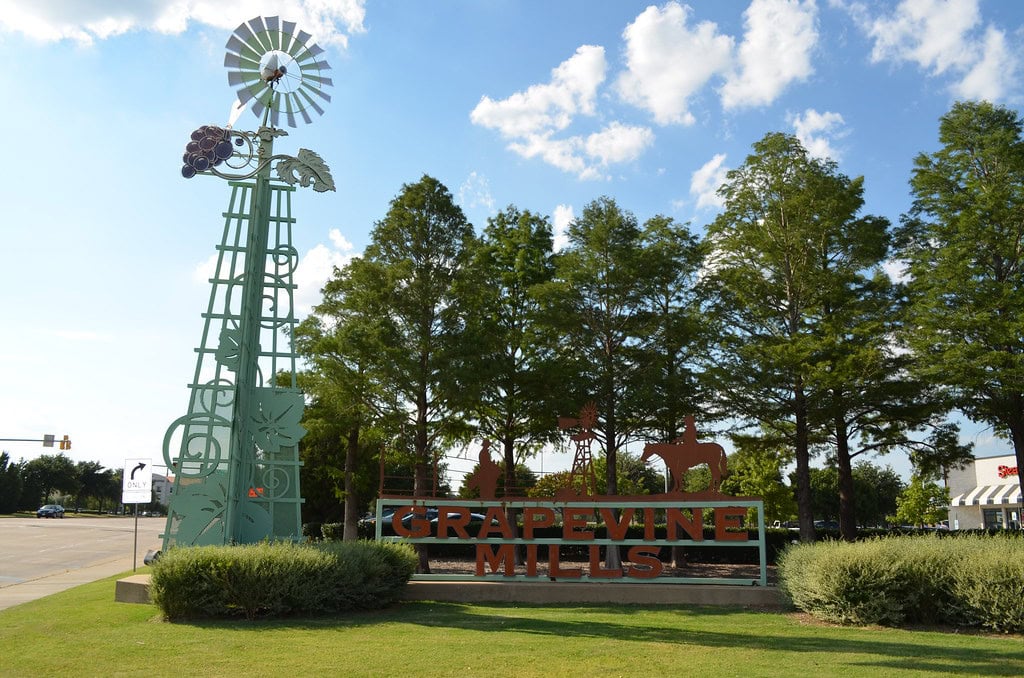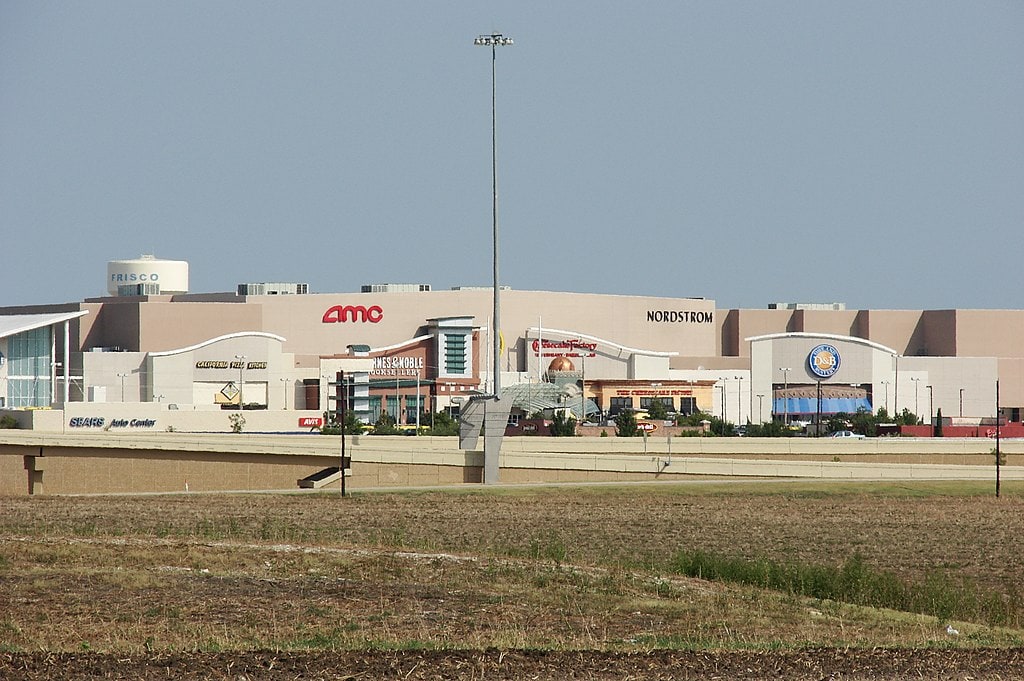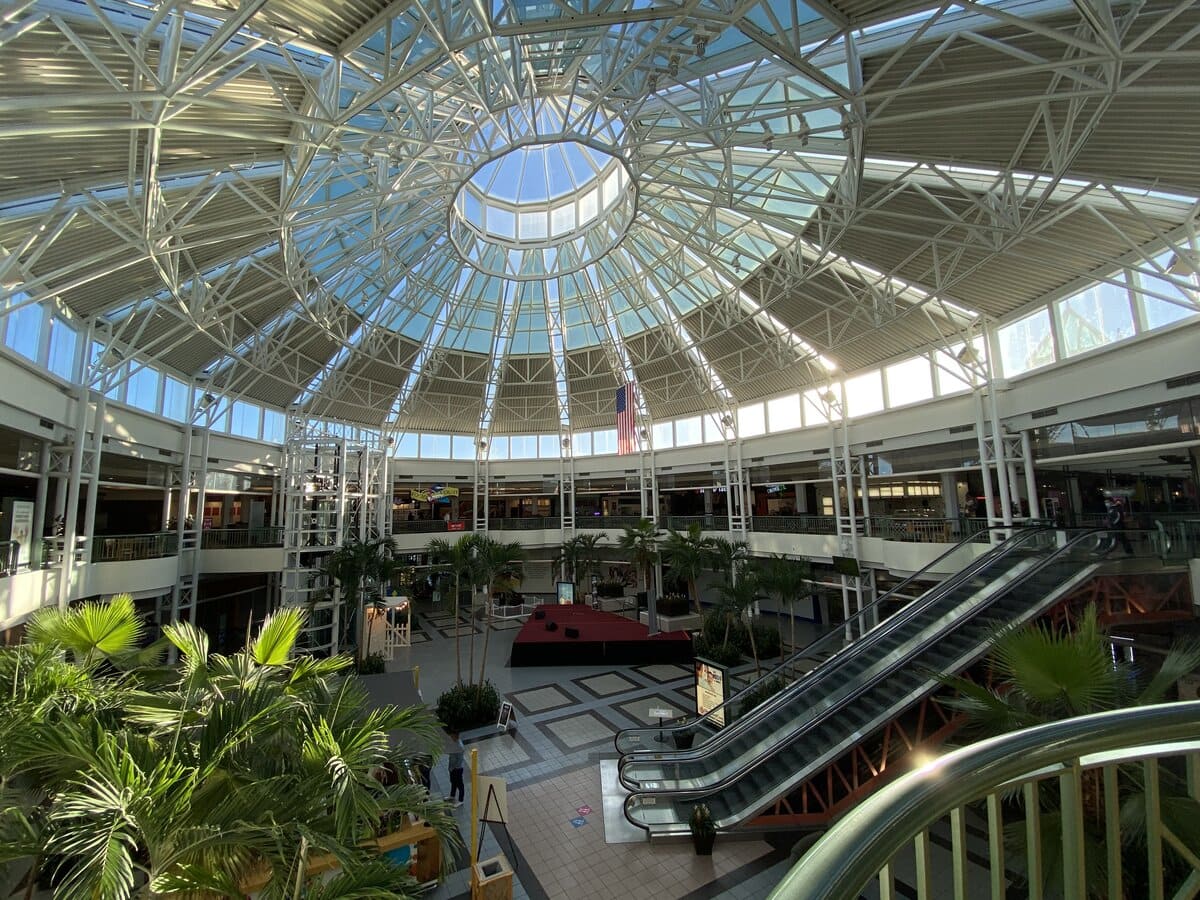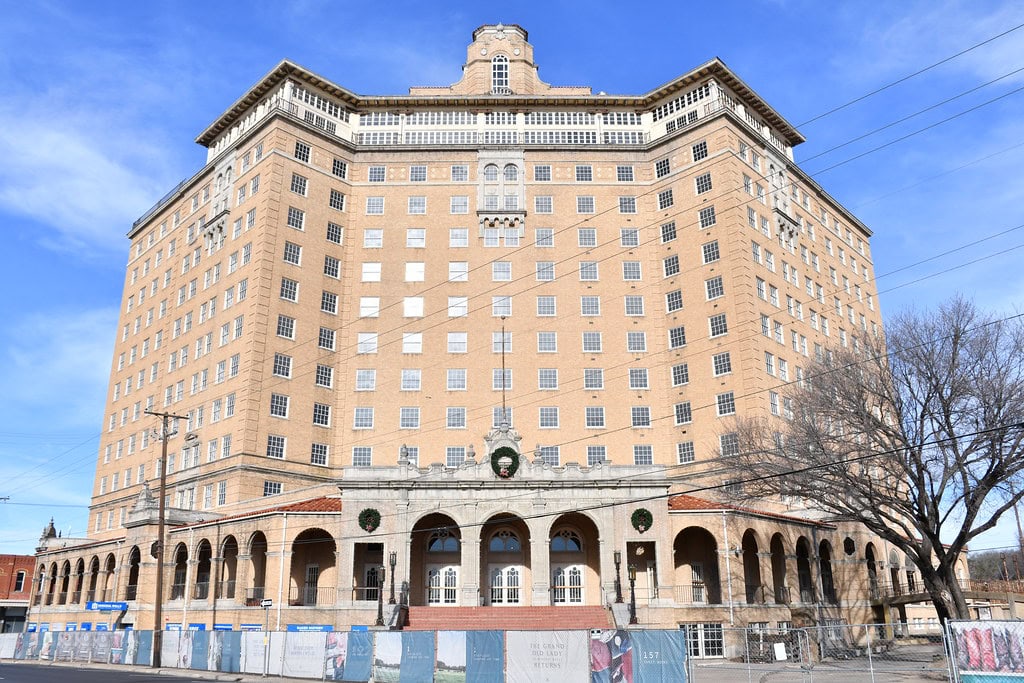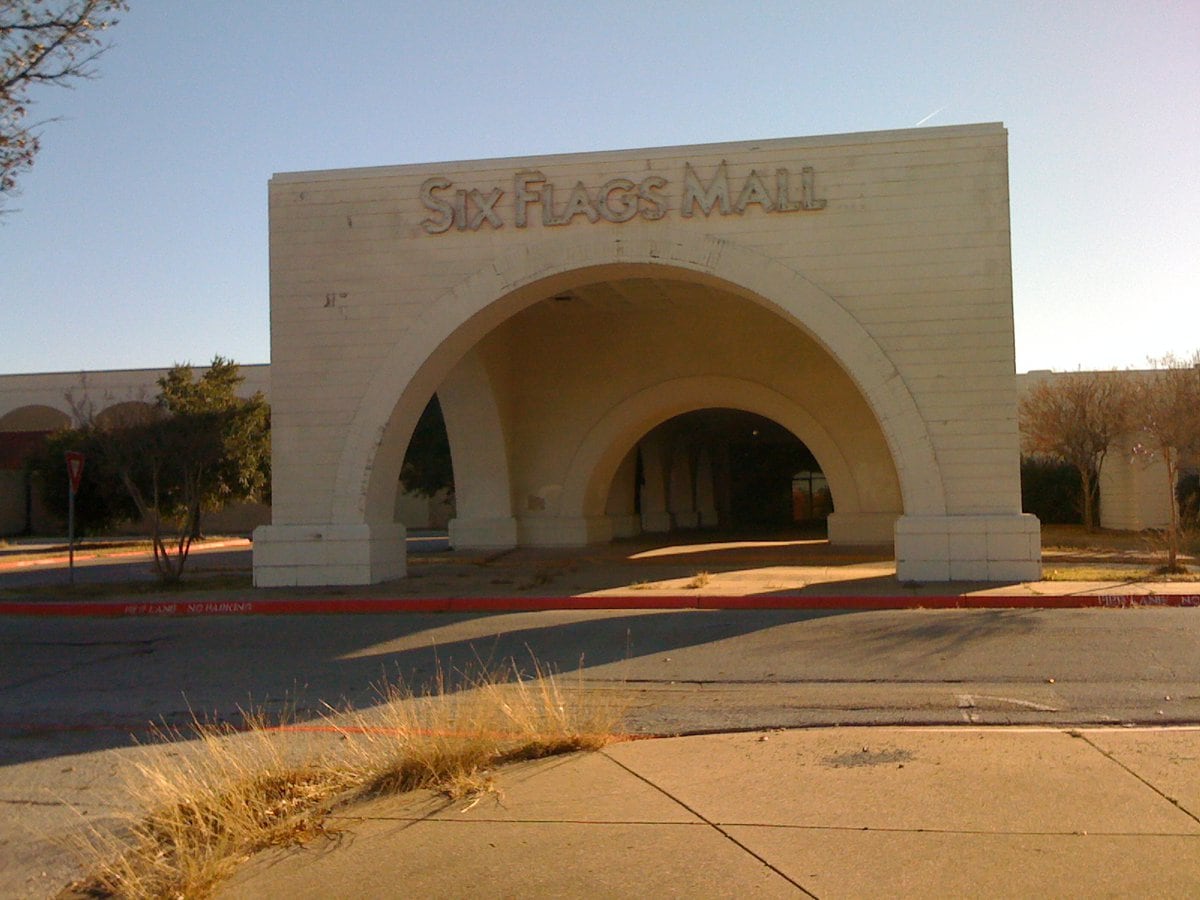Where the Mall Used to Be
Valley View Center started with a Sears on pasture land and turned into 1.65 million square feet of retail.
People parked, walked in, shopped, left, and came back the next weekend.
For a while, it worked. Anchors like Sanger-Harris, Bloomingdale's, and JCPenney helped set the rhythm, but they didn't hold it forever.
Long before the bulldozers came, the cracks were already there.
The property didn't collapse in one sweep - it slowed down, got segmented, and kept operating around its own gaps.
Anyone looking for things to do in Dallas, Texas, eventually noticed when Valley View Center slipped off the map.
Retail Site Assembly and Launch (1965-1973)
The earliest piece of Valley View Center went up in 1965 when Sears, Roebuck, and Company opened a two-story store in what was then an undeveloped stretch of Dallas County.
The site sat well outside the urban core, flanked by pasture.
Homart Development Company, Sears' real estate arm, took the next step by planning a full mall complex around it.
In 1973, Homart retained Architectonics, Inc. to design a multi-anchor shopping center that linked Sears to a newly constructed Sanger-Harris store.
A third anchor was already being planned when the mall opened.
On paper, the launch date was August 1973. On the ground, it came with promotions that bordered on novelty.
The Thom McAn shoe store offered a free 8-oz. steak with a $5 purchase. Whether or not that moved merchandise, it moved headlines.
Press coverage gave Valley View Center early visibility beyond its immediate trade area.
By the end of its first year, the mall had drawn traffic strong enough to validate its anchor-to-anchor design.
Each new store added density, not just square footage.
That retail logic would shape the rest of its lifecycle.
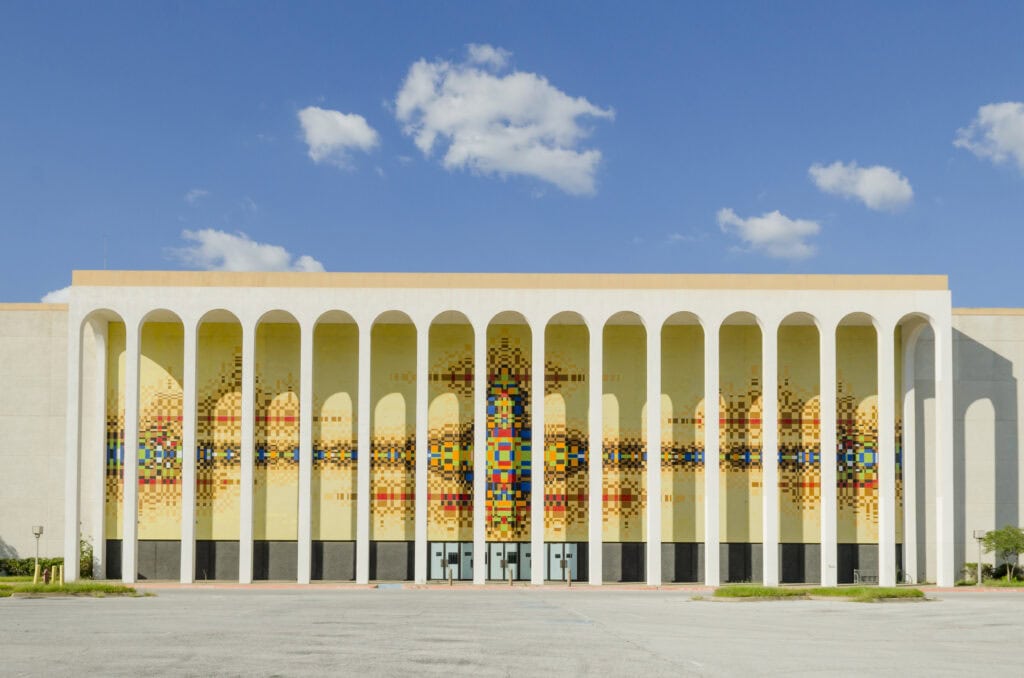
Anchor Expansion and Retail Build-Out (1973-1985)
The plan wasn't to ease in. It was to layer on. By 1976, Sanger-Harris added a third floor to its two-level layout.
That wasn't for show, it cleared room for expanded inventory lines, plus seasonal resets that required flexibility.
A few years later, in 1979, Dillard's arrived. Two levels to start. Four by 1985.
The third was retail, and the fourth was a storage and mechanical shell.
They used every inch. Linens, electronics, juniors, furniture, moved, relabeled, repositioned.
In 1982, LaSalle Street Fund bought the property. They didn't pause. Bloomingdale's opened in 1983, a new anchor, a fresh footprint, and aimed higher.
This wasn't a fill-in-the-blank department store.
It was built to capture upscale margins, draw against NorthPark's pull, and rebalance the tenant mix.
Mall traffic didn't just rise, it rerouted.
Tenant placement got more deliberate. Shoe stores fed into cosmetics.
Accessories were boxed next to the escalators. You didn't see the layout, you followed it.
Leases weren't based on square footage alone, they were traded on foot traffic, placement, and adjacency.
Valley View Center didn't just expand. It patterned itself.
Calendar Shifts and Operational Rewiring (1985-1990)
On September 1, 1985, Sunday shopping turned legal in Texas.
Valley View Center wasted no time. Doors opened, events rolled, and notices went out. Your store opens when the mall does.
A few tenants balked. That didn't last. The lease language was clear.
By January 1, 1987, the anchors ran full holiday schedules.
No reduced hours, no quiet test run. Smaller stores followed. They weren't pushed; they moved because customers showed up anyway.
The change didn't feel gradual. It hit like a policy rewritten in real-time.
Behind the glass, the entire operation shifted. Overnight cleaning. Seven-day security.
Schedules are written without a safety net. Promotions started before weekends and crossed through them.
Sales events no longer peaked on Saturday; they spread out and extended.
The unused spaces disappeared. New Year's wasn't downtime. Sundays weren't holdouts. Every day was live, and the mall treated them that way.
There wasn't a ceremony around it. Just an internal shift, the kind that gets baked into schedules, not press releases.
By the end of the decade, Valley View Center wasn't just open longer. It was wired for it.
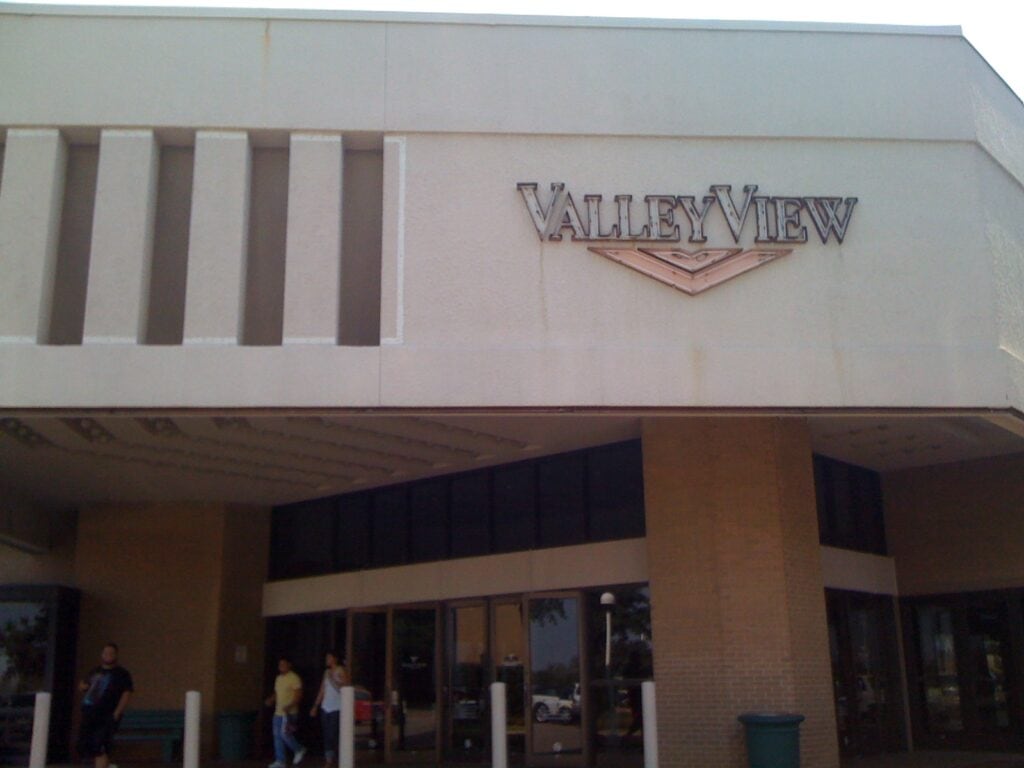
Vacancy Cycles and Anchor Turnover (1990-2000)
Bloomingdale's pulled out on August 18, 1990. Sales had dropped, and local competition cut deep.
The space didn't stay active. It sat for six years.
Federated Department Stores tried to unload it to Montgomery Ward through a bankruptcy proceeding, but the deal fell apart.
LaSalle Street Fund filed to block the sale, and the court backed them in 1991.
Meanwhile, the corridor rebranded itself as "The Conservatory", with potted plants, benches, a grand piano, but no anchor.
The mall's twin-screen theater, Valley View Cinema 1 & 2, shuttered in 1991.
That left another hole. The lobby was boarded up, and projection rooms were gutted.
It sat until 2001 when Radio One retrofitted the space for KBFB and KSOC.
Sloped floors were leveled, a small auditorium was added, and studios moved in by January 2002.
In 1996, JCPenney took over the former Bloomingdale's footprint.
It opened on October 19 with three floors and a layout wired for traffic, cosmetics on two, salon on three, and a closed-off area kept in reserve.
By 2000, Valley View Center had managed to fill its major vacancies, but the gaps were showing.
What used to turn over in months now takes years. Anchors still pulled, but the rope was fraying.
Ownership Shakeups and Creative Leasing (2000-2012)
By 2000, Valley View Center wasn't growing, it was adjusting.
The Macerich Company still held the property, but foot traffic no longer matched square footage.
The Smart Shoppers Club, once a data-gathering tool and loyalty program launched in 1994, was shut down by late 2000.
The replacement, Centerlinq, was web-based, cardless, and cheaper to run.
In 2000, management announced plans for an AMC theater as a fifth anchor.
It took until May 2004 to open. AMC Valley View 16 replaced the gap left by the older cinema with stadium seating and full concessions.
Its arrival helped temporarily stabilize foot traffic, but only in its corridor.
Elsewhere, new plans kept failing. Macy's shut its doors in March 2008. Dillard's followed in December that same year.
The 1.65 million square foot mall passed to LNR Partners in 2010 after Macerich defaulted on $125 million in debt.
Jones Lang LaSalle stepped in to manage day-to-day operations.
Vacant spaces were repurposed, Steve & Barry's became Bontera Bazaar, then El Mercado.
In 2012, a pivot: Beck Ventures took over ownership and management.
Instead of full occupancy, they offered studios to artists.
That same year, "The Gallery at Midtown" took over empty wings with painting, sculpture, and mixed media.
Retail was thinning out. Creative tenants filled the frame.
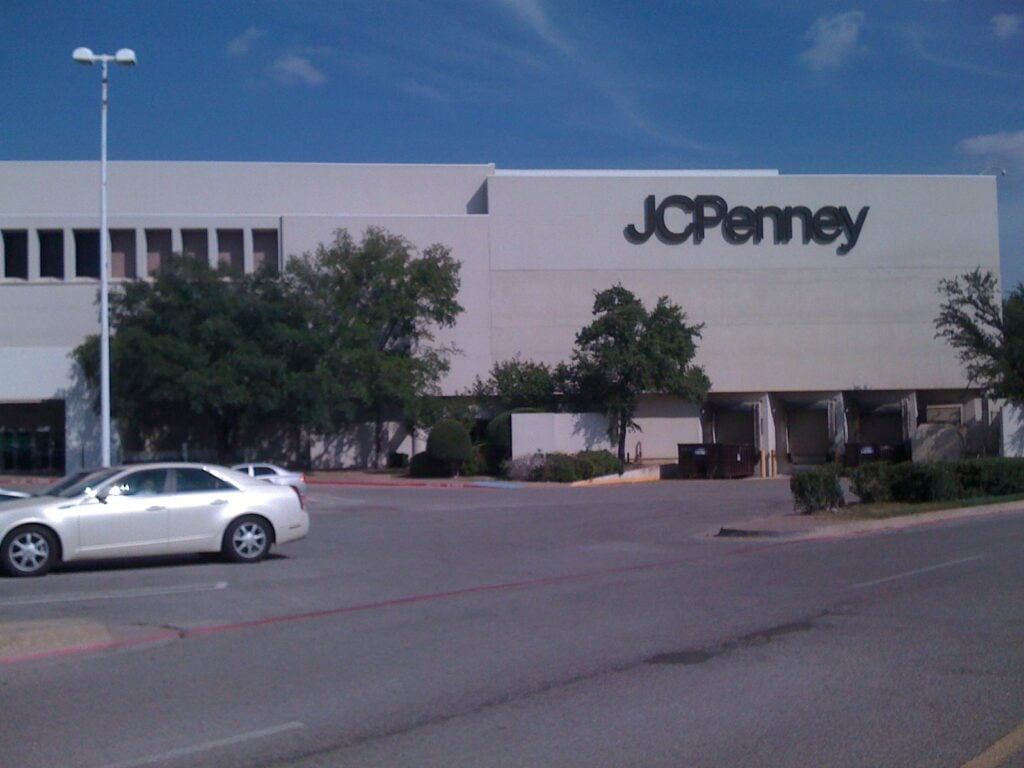
Demolition Starts, Stops, and Stalls (2012-2019)
Beck Ventures took full control in 2012.
The plan was sweeping: Dallas Midtown, a mixed-use project that would erase Valley View Center and replace it with new offices, retail, residences, and a hotel.
But the mall wasn't cleared overnight.
Demolition was pitched to begin in December 2016, with exceptions carved out for AMC Valley View 16, Sears, and radio studios still operating inside.
Sanger-Harris had already been stripped. Macy's, gone since 2008, followed next. Then, the wrecking paused.
Utilities got in the way. Lawsuits landed.
Public incentives tied to demolition, $36 million from the City of Dallas, evaporated in mid-2016 when the site failed to meet razing deadlines.
Beck Ventures came back in 2017 asking for $50 million in new public aid. The city said no.
Tenants were pushed out in waves. The Gallery at Midtown closed in May 2017.
Radio One stations, once housed in the old theater wing, relocated the same year.
Sears, the last original anchor, shut down on July 16, 2017.
Even then, AMC kept screening films. Corridor access stayed open until May 2019.
At that point, with Dillard's half-demolished and JCPenney reduced to a shell, the interior was sealed.
Only the theater remained. And the clock kept running.
Final Clearance and Future Footprint (2020-2025)
The mall's final stretch ran mostly on momentum. AMC Valley View 16, opened in 2004 with a Cowboys-themed launch, closed for good on January 2, 2022.
That left an empty box in a field of rubble. In February 2023, the property caught fire. Fire crews counted fifty responders.
The cause wasn't resolved, but the blaze underscored what was left: concrete, stairwells, and a burned-out layout.
By May 2023, demolition was done. Every anchor, corridor, and retail bay had been cleared.
Nothing from the original mall was left above ground.
After more than a decade of delays, the site was flattened and primed for redevelopment.
Dallas Midtown, first proposed in 2012, was now back in motion.
Construction was set to begin in 2024. Beck Ventures' plan included a 20-acre park, new retail pads, residential units, and commercial towers.
One corner of the site had already drawn investment interest.
Seritage Growth Properties and KDC had filed plans in 2017 for a million square feet of office space on the former Sears parcel.
However, as of early 2025, the Valley View Center property is for sale, and redevelopment is still stalled.
In March, the Dallas City Council approved an $11 million purchase of nearby land intended for a future park.
The move is tied to broader plans for an International District, though no construction timeline has been confirmed.
Developers and city officials continue to negotiate.
Demolition wrapped in 2023, but two years later, the lot remains undeveloped, waiting on capital, permits, or both.
🍀

